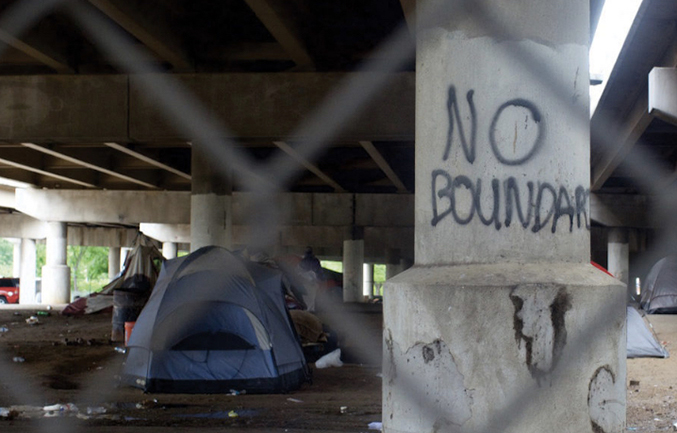A new article in The Atlantic says research shows that the simplest answer to homelessness is a home.
Obviously, the longer answer has more nuance. There are many reasons why someone may remain homeless, but the article reminded me of (and even mentions) the premise some researchers use: musical chairs.
The children playing might not make it to a chair. Maybe one kid gets anxious. Maybe some are smaller than others. Maybe one injures himself before he can get to a chair. You can say that all of them don’t get a chair because of that, but the main reason is that there aren’t enough chairs.
There’s a great deal of debate about whether so-called Housing First policies ignore what made people homeless in the first place—things like substance abuse or unemployment or underemployment.
But Joli Angel Robinson, CEO of Housing Forward (formerly Metro Dallas Homeless Alliance), says there are misconceptions about the approach of these programs, which prioritize getting people in a home and then provide wraparound services.
“The really short phrasing we use is that Housing First does not mean ‘housing only,’” she said. “Most people that are not for Housing First are trying to skew the idea to mean it’s housing only. People need a variety of resources, and Housing First meets those needs and doesn’t create barriers for individuals.”
Instead, Robinson says, it eliminates one of the bigger stressors and provides people with the stability to tackle the other issues they may be facing. “Housing First really is about the robust case management and wraparound services that truly meet an individual’s needs,” she said.
The Atlantic piece explains: “If mental-health issues or drug abuse were major drivers of homelessness, then places with higher rates of these problems would see higher rates of homelessness. They don’t. Utah, Alabama, Colorado, Kentucky, West Virginia, Vermont, Delaware, and Wisconsin have some of the highest rates of mental illness in the country, but relatively modest homelessness levels. What prevents at-risk people in these states from falling into homelessness at high rates is simple: They have more affordable housing options.”
And not everyone who needs housing is at the point in their lives where they should be required to maintain employment, Robinson said.
“I think there is an underlying thought that everyone that is unhoused needs to maintain employment,” she said. “But what we’re seeing is even as the unhoused population is aging, that’s not meeting the need.”
Robinson said that once a person is housed, working with them to determine what wraparound services they need and providing those services does work. “The other model is assuming everyone needs to be employed or is employable, and it assumes that mostly everyone is either struggling with mental health or drugs and alcohol,” she said.
Housing advocates that work with the unhoused and under-sheltered population point to the policy barriers that bog down programs designed to house people.
For instance, Texas law forbids cities from passing ordinances that require landlords to rent to tenants with Housing Choice Vouchers (formerly known as Section 8). Secondly, a housing shortage means rents increase, which makes it even less likely that landlords would accept a voucher voluntarily.
The city of Dallas is part of what’s called the Dallas R.E.A.L. Time Rapid Rehousing program, which includes the entities Housing Forward, Dallas Housing Authority, Dallas County, Mesquite, and Plano. It has helped 1,220 people move into homes since its inception in 2021, and placements were up 35 percent in the third quarter of this year compared to 2021. Rapid re-housing is designed to put individuals and families that don’t need a lot of ongoing supports into homes quickly, and without preconditions like employment, income, sobriety, or the lack of a criminal record.
Robinson said that she does hear from people who feel that there should be conditions to getting housing.
“This is what I’ve been telling people: ‘OK, fine, I buy into your theory that they need to do all these things first. But they’re still going to need housing,’” she said. “OK, I buy into you theory. Cool! But that individual going through a training program to become a forklift operator is still going to need housing.”
Experts say that experiences and data bear out that Housing First programs do work, especially when coupled with wraparound services that help tenants acclimate to apartment living, holding a job, paying bills, and getting the healthcare they need.
The simplest answer to homelessness is a home.
Author






